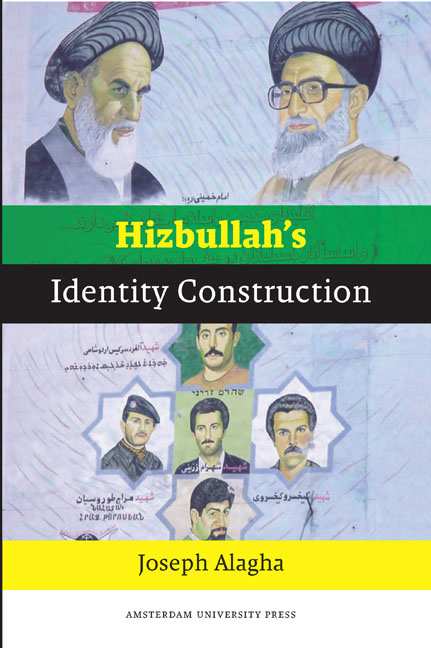Book contents
- Frontmatter
- Dedication
- Contents
- A Note on Transliteration
- Acknowledgements
- List of Abbreviations
- Summary
- Introduction and Analytical Framework
- 1 Tolerance and Discrimination: Ahl Al-Dhimma in the Islamic Order
- 2 Interpretation and Authority: Wilayat Al-Faqih
- 3 Political Violence: Terrorism and 9/11
- 4 Political Violence: Suicide Operations
- 5 From Cooptation to Contestation to Political Power
- 6 The Doha 2008 Accord and its Aftermath
- 7 The Eighth Conclave: A New Manifesto (November 2009)
- 8 Epilogue: Future Prospects – Disarmament and the Peace Process
- Afterword
- Glossary
- Additional Reading
- Notes
- Selected Bibliography
- Index
- Praise for Hizbullah's Identity Construction (1978-2010)
Summary
Published online by Cambridge University Press: 19 January 2021
- Frontmatter
- Dedication
- Contents
- A Note on Transliteration
- Acknowledgements
- List of Abbreviations
- Summary
- Introduction and Analytical Framework
- 1 Tolerance and Discrimination: Ahl Al-Dhimma in the Islamic Order
- 2 Interpretation and Authority: Wilayat Al-Faqih
- 3 Political Violence: Terrorism and 9/11
- 4 Political Violence: Suicide Operations
- 5 From Cooptation to Contestation to Political Power
- 6 The Doha 2008 Accord and its Aftermath
- 7 The Eighth Conclave: A New Manifesto (November 2009)
- 8 Epilogue: Future Prospects – Disarmament and the Peace Process
- Afterword
- Glossary
- Additional Reading
- Notes
- Selected Bibliography
- Index
- Praise for Hizbullah's Identity Construction (1978-2010)
Summary
The Lebanese resistance movement Hizbullah changes as circumstances change. Since its inception, Hizbullah has been keen to control the Lebanese political system, initially through a top-down revolutionary process aimed at obtaining power by military force. This radicalism proved futile in the 1980s. From a Realpolitik perspective, Hizbullah reconstructed its identity, altered its political strategy, and recognized the 1990 Ta’if Agreement, Lebanon's new constitution.
Benefiting from the Syrian influence that controlled Lebanon militarily, Hizbullah played its cards well and was able to extract an important concession from the Lebanese government by being classified as a resistance movement and not a militia. This meant that it was able to keep its arms and continue resisting the Israeli occupation, while the militias of all the Lebanese political parties – which had participated in the sixteen-year civil war – had to disband and surrender their weapons to the Lebanese Army. This exception made Hizbullah the strongest military player in Lebanon, even more powerful than the Lebanese Army and security forces. Hizbullah continues to hold a considerable arsenal even after the nearly complete Israeli withdrawal from Lebanon in May 2000 and the Syrian withdrawal in 2005.
From the early 1990s onwards, Hizbullah readjusted its identity by endeavoring to control the political system through a bottom-up process of gradual participation and integration into the democratic system, starting with the parliament, the municipal councils, and the cabinet or council of ministers, the main executive body of the country. Thus, Hizbullah shifted to acceptance of, and engagement in, the democratic process under a sectarian-confessional political and administrative system that it previously regarded as an apostate. More dramatically, Hizbullah modified its demand from the abolition of political sectarianism to the adoption of the political Maronite (Christian) discourse, which stresses abolishing political sectarianism in one's mentality, before officially abolishing it in written laws. The party also called for upholding the principle of consensual democracy. However, based on its demographic strength, Hizbullah called for reducing the voting age from 21 to 18 and changing the electoral system to proportional representation, which the party believed would give the 18 ethno-confessional communities more equitable representation.
- Type
- Chapter
- Information
- Hizbullah's Identity Construction , pp. 17 - 18Publisher: Amsterdam University PressPrint publication year: 2012

